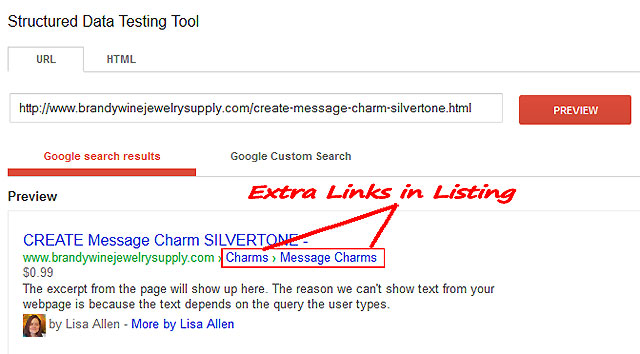In this video you will learn one simple trick that can improve your search engine rankings by helping Google interpret your content correctly.
By changing the markup of your “breadcrumb” links to include microdata attributes using the Breadcrumb schema you can improve how Google understands your topical relevance.Because relevance is one of the larger factors in whether your content will rank for certain keywords, can dramatically improve your rankings. Watch the video below for more.

Breadcrumb Microdata Code Example:
<span itemtype="http://data-vocabulary.org/Breadcrumb" itemscope=""> <a itemprop="url" href="/blog/category/seo/"> <span itemprop="title">SEO</span> </a> </span>
The parts shown in pink in the example above were added to the original link markup to create the breadcrumb microdata.
Here’s a list of the changes that were made:
- The original <a> link was wrapped in a <span> tag containing a link to the Breadcrumb Schema definition
- The itemprop=”url” attribute was added to the existing <a> tag
- A new <span> tag containing the itemprop=”title” attribute was wrapped around the Anchor Text of the link.
What are the SEO Benefits of Breadcrumb MicroData?
There are several benefits to adding Breadcrumb Microdata to your website’s breadcrumb navigation.
- Because you have now specifically tied your content to an information category through the breadcrumb markup, Google does not have to guess at the relevance of your content. This means potentially better rankings against competitors not utilizing semantic markup.
- Changes to the appearance of your search engine listing make your listings stand out and improve click through.

A Search Listing with Breadcrumb Microdata Applied
You may also notice the above listing is special in even more ways than just the extra breadcrumb links.
The listing shown also has product pricing information from the product schema, and authorship information included.
Google may or may not choose to display all of the additional markup information with this listing in real time, but the rich snippet preview tool shows that Google is taking this extra information into account in it’s calculations.
As you can see, there are some real advantages to adding this simple markup to your website navigation.
Did You Enjoy This Post?
How about sharing it? 🙂
And as always, I love to hear from you, so if you have questions or comments about this post, just drop me a note in the comments box below.
Great info! Schema markup is really powerful stuff right now, especially since it hasn’t been implemented by many yet. Google will reward those who gives it what it wants. This is great stuff. Thanks.
I totally agree. The masses are getting word on authorship, but there is just so much further you can take it with your site to get ahead. I was seeing changes to my store search listings in google with the extra category links in just a few hours. I’ve also seen some of my rankings for very difficult terms improve by several pages since I put the breadcrumb meta in.
It’s very powerful.
Thanks Lisa! Great training as always.:) Glad you sent the email. I’ve been looking forward plugins to boost a client’s on-site SEO and am poking my nose around your site now doing just that…
Thanks for stopping by Ken! If you’re looking for a wordpress plugin that does breadcrumbs with schema markup you can check out RDFa Breadcrumb that will do it. The markup is a slightly different format, but should still work without hacking your theme.
For shopping carts you might have to look a little harder or roll your own but as you can see, the code is really simple to add.
For more on the different markup schemas you can add for different types of data, check out Schema.org